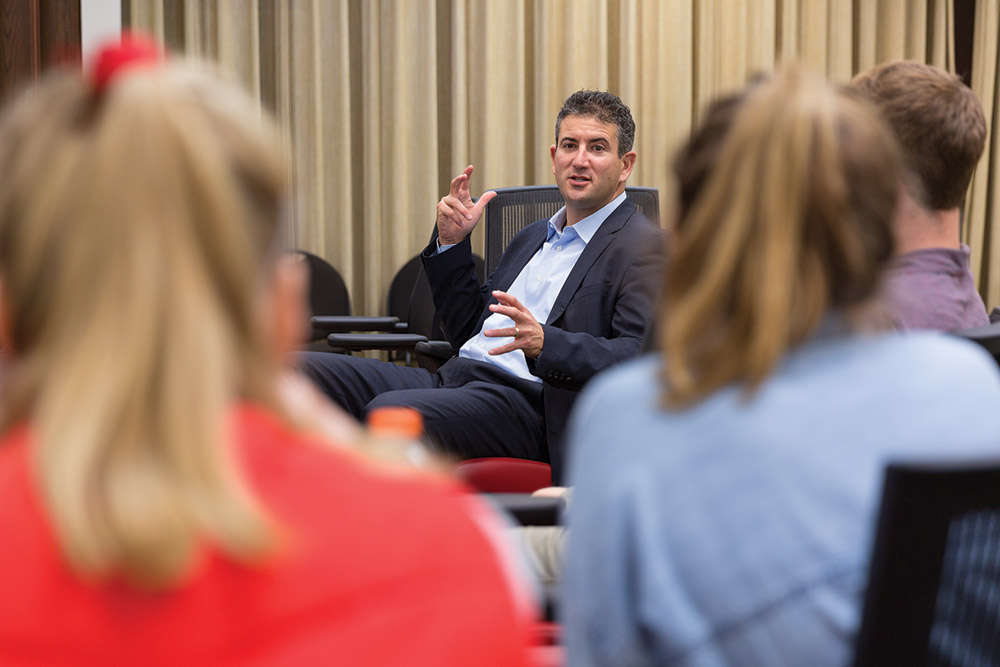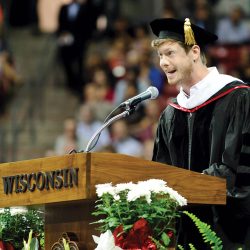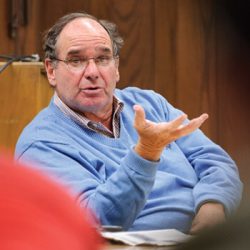Andy Katz ’90 is used to telling complicated stories to millions. He’s been doing so since 2000 as a writer, college basketball reporter, and back-up anchor for ESPN’s preeminent journalistic program, Outside the Lines.
But despite growing up the son of a Boston College Law School professor, Katz never gave much thought to becoming a teacher himself. The idea didn’t gel until he visited the UW–Madison campus in fall 2015 as part of a writer-in-residence program.
“It wasn’t until I was standing in front of the students that I realized how comfortable I was in that role,” he says. “It opened my eyes to wanting to teach more in some form.”
Katz got his wish this summer with Journalism 475: Sports Journalism in the Digital Age, a course he developed with faculty in the School of Journalism and Mass Communication. Students spent two weeks in the classroom for intensive lectures and seminars, followed by online instruction, discussion, and exercises. They learned core sports journalism skills by covering a particular team or sport, and they grappled with the challenges of reaching a mass audience in a changing media landscape.
The class also delved into current topics ranging from the scandal surrounding the football program at Baylor University to the suicide of BMX rider Dave Mirra and his subsequent diagnosis of chronic traumatic encephalopathy, or CTE.
Students also dissected a profile of golfer Tiger Woods in ESPN The Magazine, an example of long-form sports journalism that goes beyond the realm of typical human interest reporting, says Robert Schwoch ’88, a onetime sports reporter who is also a lecturer and undergraduate adviser, and who served as the official instructor for Katz’s summer course.
Because of his schedule filling in for Outside the Lines, Katz joined the class via Skype from his office at ESPN’s studios in Connecticut during the first week and mentored students online for the rest of the class. Former Washington Post sports columnist Len Shapiro ’68, who previously taught sports journalism courses at the UW, served as a coinstructor for Katz’s course.
Schwoch is hopeful Katz can teach more classes at the UW, saying, “There’s just no substitute for that level of experience in a classroom. He really brought relevant, up-to-the-minute information to the class.”
Remembering his days as a student, Katz is eager to give back. “I used to seek out people … for advice all the time,” he says. “If I can be that person for students today, then I’m all for it.”
Published in the Fall 2016 issue




Comments
No comments posted yet.